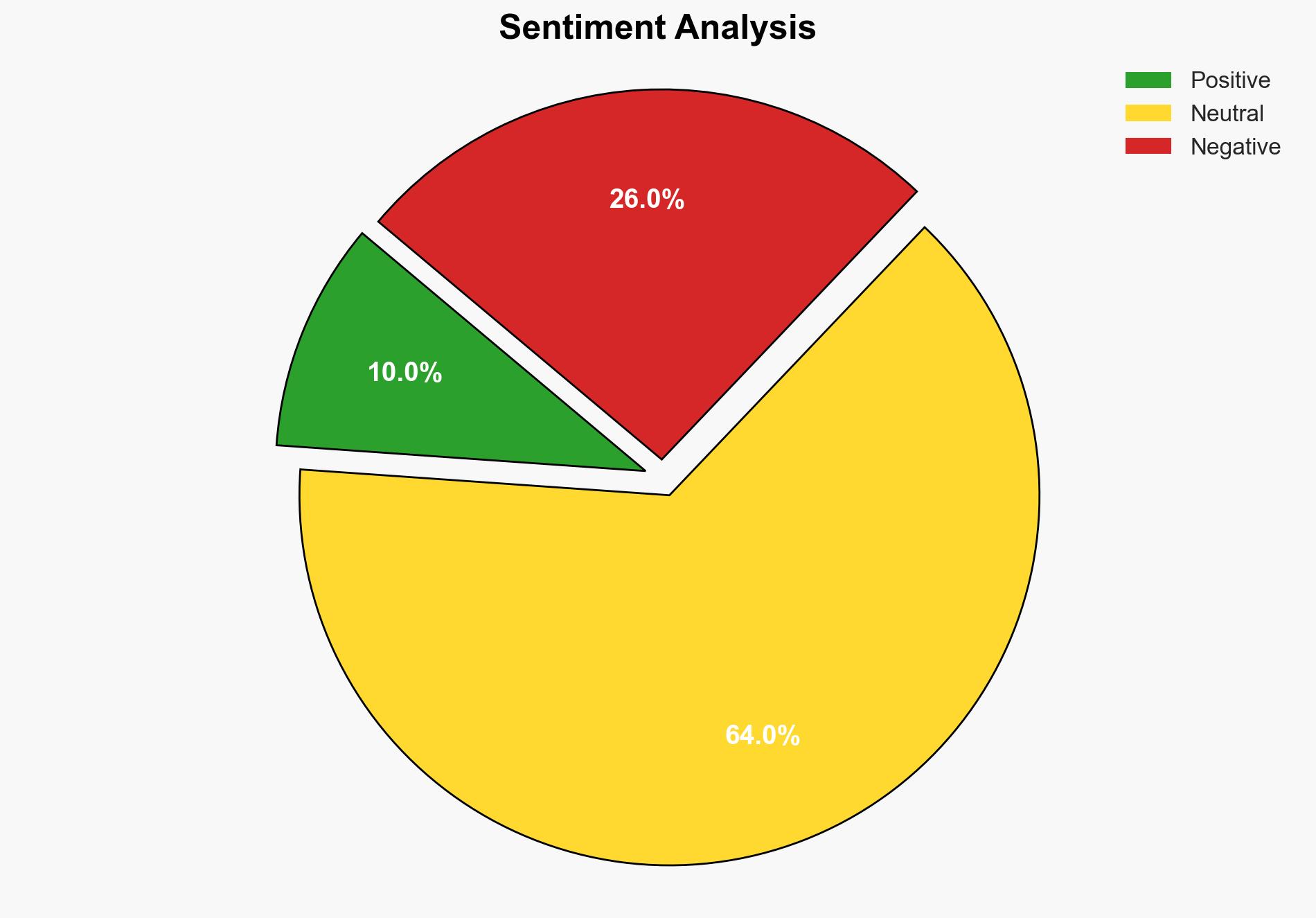Israel Airstrikes Gaza Killing Dozens as Negotiations for Next Phase of Cease-Fire Stall – Time
Published on: 2025-03-18
Intelligence Report: Israel Airstrikes Gaza Killing Dozens as Negotiations for Next Phase of Cease-Fire Stall – Time
1. BLUF (Bottom Line Up Front)
Recent Israeli airstrikes on Gaza have resulted in significant casualties, disrupting a ceasefire that had been in place since January. The strikes were ordered following Hamas’s refusal to release hostages, a condition set by Israel for extending the ceasefire. This escalation poses immediate risks to regional stability and complicates ongoing negotiations. It is crucial for stakeholders to engage in diplomatic efforts to de-escalate the situation and address humanitarian concerns.
2. Detailed Analysis
The following structured analytic techniques have been applied for this analysis:
General Analysis
The airstrikes mark a significant escalation in the conflict between Israel and Hamas, with Israel aiming to achieve strategic objectives, including the destruction of Hamas’s capabilities and the release of hostages. The strikes have resulted in civilian casualties, including women and children, exacerbating the humanitarian crisis in Gaza. The resumption of hostilities follows a period of relative calm and comes amid domestic pressures on Israel’s leadership, including protests and political challenges.
3. Implications and Strategic Risks
The renewed conflict poses several risks:
- Increased regional instability, potentially drawing in neighboring countries and non-state actors.
- Heightened humanitarian crisis in Gaza, with shortages of essential supplies such as food, medicine, and fuel.
- Potential for international condemnation and diplomatic fallout, affecting Israel’s relations with key allies.
- Domestic unrest in Israel, driven by public dissatisfaction with the handling of the hostage situation and security policies.
4. Recommendations and Outlook
Recommendations:
- Engage in multilateral diplomatic efforts to broker a new ceasefire agreement that addresses both security concerns and humanitarian needs.
- Enhance humanitarian aid delivery mechanisms to ensure timely support for affected populations in Gaza.
- Implement confidence-building measures to reduce tensions and foster dialogue between conflicting parties.
Outlook:
Best-case scenario: A negotiated ceasefire is reached, leading to a de-escalation of hostilities and improved humanitarian conditions in Gaza.
Worst-case scenario: The conflict intensifies, resulting in widespread destruction and a regional spillover effect.
Most likely outcome: Protracted negotiations with intermittent hostilities, requiring sustained international mediation efforts.
5. Key Individuals and Entities
The report mentions the following individuals and entities:
- Benjamin Netanyahu
- Izzat al Risheq
- Omar Greygaa
- Einav Zangauker
- Ahmed al Farra
- Tanya Haj Hassan
- Khaled Alserr
- Hamas
- Houthi rebels





